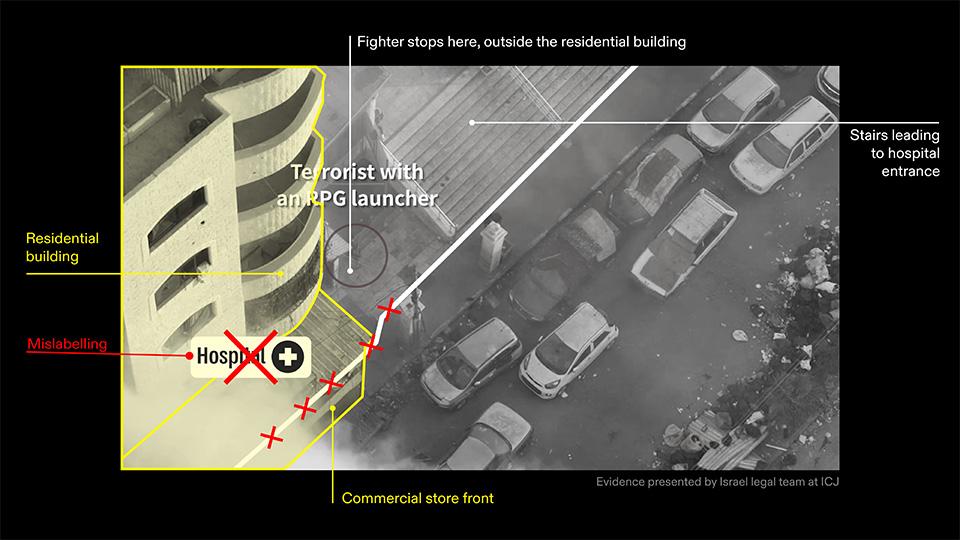Investigation challenges evidence to International Court of Justice
Primary page content
A new investigation by Goldsmiths research agency Forensic Architecture assesses the visual materials presented by Israel at the International Court of Justice.

The Israeli defence came after the South African government made its case to the court last month under the provisions of the 1948 Genocide Convention. South Africa sought “provisional measures” that the court could impose within weeks to halt the bombing in Gaza.
As part of its defence, the Israeli team presented visual material, including maps, videos, images, and annotated diagrams.
Goldsmiths’ Forensic Architecture team have sourced the elements of evidence from the recording of the Israeli legal team’s presentation to the court as found on the United Nations website, analysed these in detail and claim they have found multiple instances where the Israeli legal team misrepresented the visual evidence they cited.
According to the report, Forensic Architecture claim to have “found eight instances where the Israeli legal team misrepresented the visual evidence they cited, through a combination of incorrect annotations and labelling, and misleading verbal descriptions. These instances are presented and explained in this report.
“Our study also reveals that the Israeli legal team presented single instances of alleged Palestinian military use of civilian infrastructure as blanket justifications for the systematic and widespread attacks on civilians, shelters, schools, and hospitals.”
Forensic Architecture analysed several of the visual materials presented by Israel to the court, including evidence surrounding a rocket launch site, Al-Quds and Al-Shifa Hospitals, Beit Hanoun Unrwa School, a Civilian Residential Building and a Humanitarian Zone in Rafah.
In its January interim ruling, the court ordered Israel to take action to prevent acts of genocide in the Gaza strip but stopped short of calling for an immediate ceasefire.
Forensic Architecture is an interdisciplinary academic field developed and developing from within Goldsmiths’ Centre for Research Architecture (CRA) since 2010. The term refers to the production and presentation of spatial evidence within legal, political, and cultural contexts, and takes architecture to include not only buildings, but shaped environments at the scale of cities and territories.
In addition to the CRA’s MA in Forensic Architecture, Forensic Architecture has set up and supported academic courses to further develop the field of forensic architecture at universities worldwide.
Find out more about the research agency and its investigations on the Forensic Architecture website.